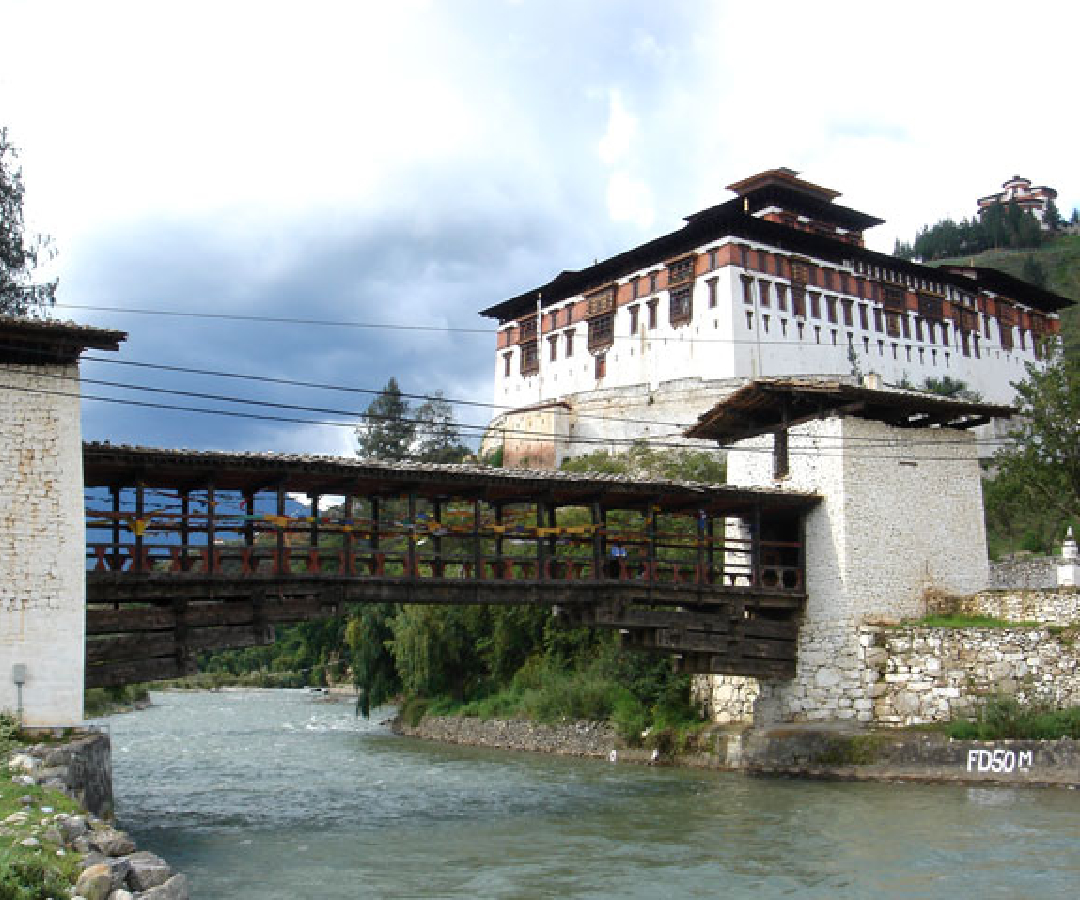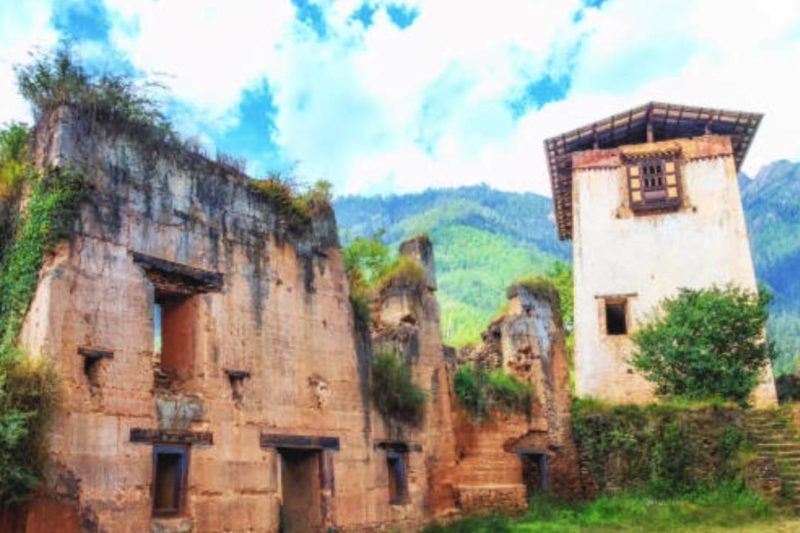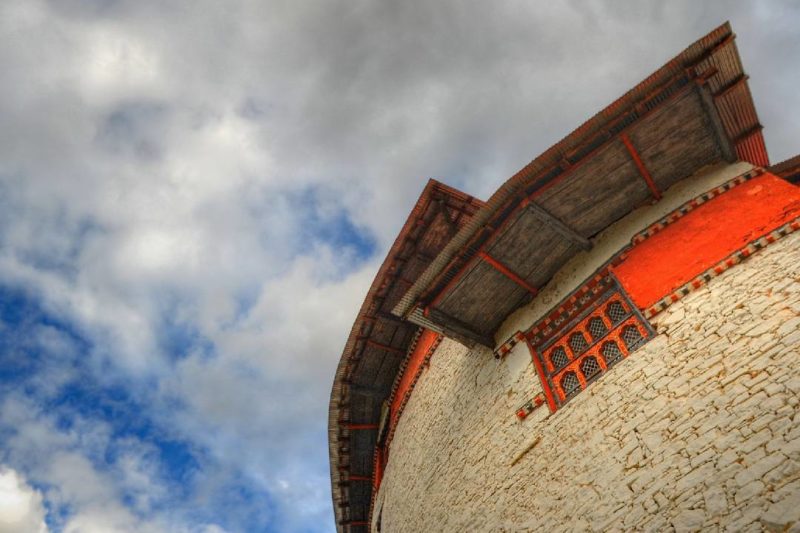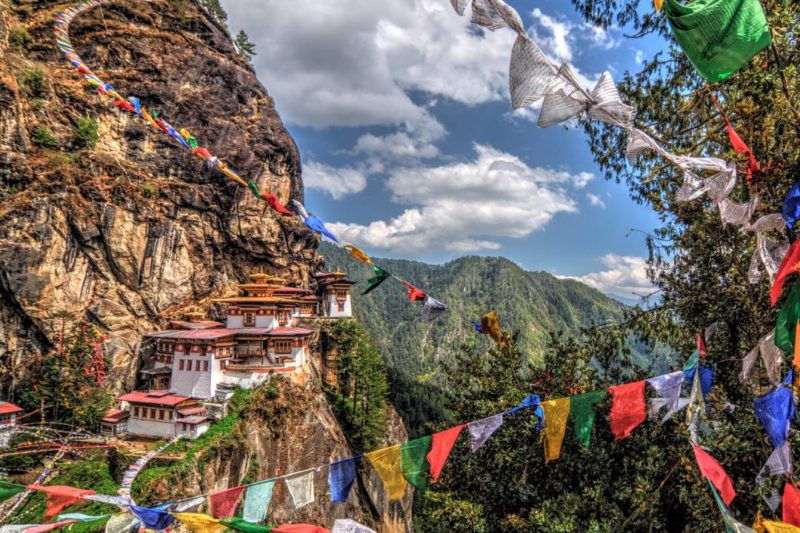Overview
The Rinchen Pung Dzong or Rinpung Dzong translates to ‘Fortress on a Heap of Jewels’ and is the finest illustration of Bhutanese architecture and craftsmanship you’ll see. So impressive it is that even Bernardo Bertolucci filmed scenes of his 1995 film Little Buddha here.
In 1644, Zhabdrung Ngawang Namgyal (the unifier of Bhutan) ordered the construction of the dzong on the foundation of a monastery built at the beginning of the tenth century by Padma Sambhava. The imposing fort served effectively to defend the Paro valley against numerous Tibetan invasions. So much so that British political officer John Claude White reported that in 1905 there were old catapults still in the rafters of the dzong’s verandah for throwing massive boulders at the invading army.
Even so, although the dzong survived the earthquake of 1897, it was severely damaged by fire in 1907. The fire destroyed all the jewels housed in the dzong and only one thangka – known as Thongdel – was salvaged. Today, it houses both the monastic body and government offices including the local courts.
In the first day of spring, the Paro Tshechu is held in the dzong courtyard – which is filled to the brim. To the northeast of the entrance, is a stone-paved area where masked dancers perform the main dances of the tsechu. A thondrol or a huge thangka of Guru Rinpoche, more than 18m square, is unfurled shortly after dawn on the final day of the festival. The Paro tshechu was commissioned in the 18th century by the eighth Desi (secular ruler of Bhutan) and it continues be a major draw for locals and tourists even today.
Below the dzong, a traditional wooden covered bridge called Nyamai Zam spans the Paro Chhu. This is a reconstruction of the original bridge, which was washed away in a flood in 1969. Earlier versions of this bridge were removed in time of war to protect the dzong. The most picturesque pictures of Paro Dzong are taken from the west bank of the river, just downstream from the bridge.
The dzong courtyard is open daily, but on weekends the offices are deserted and most chapels are closed.




